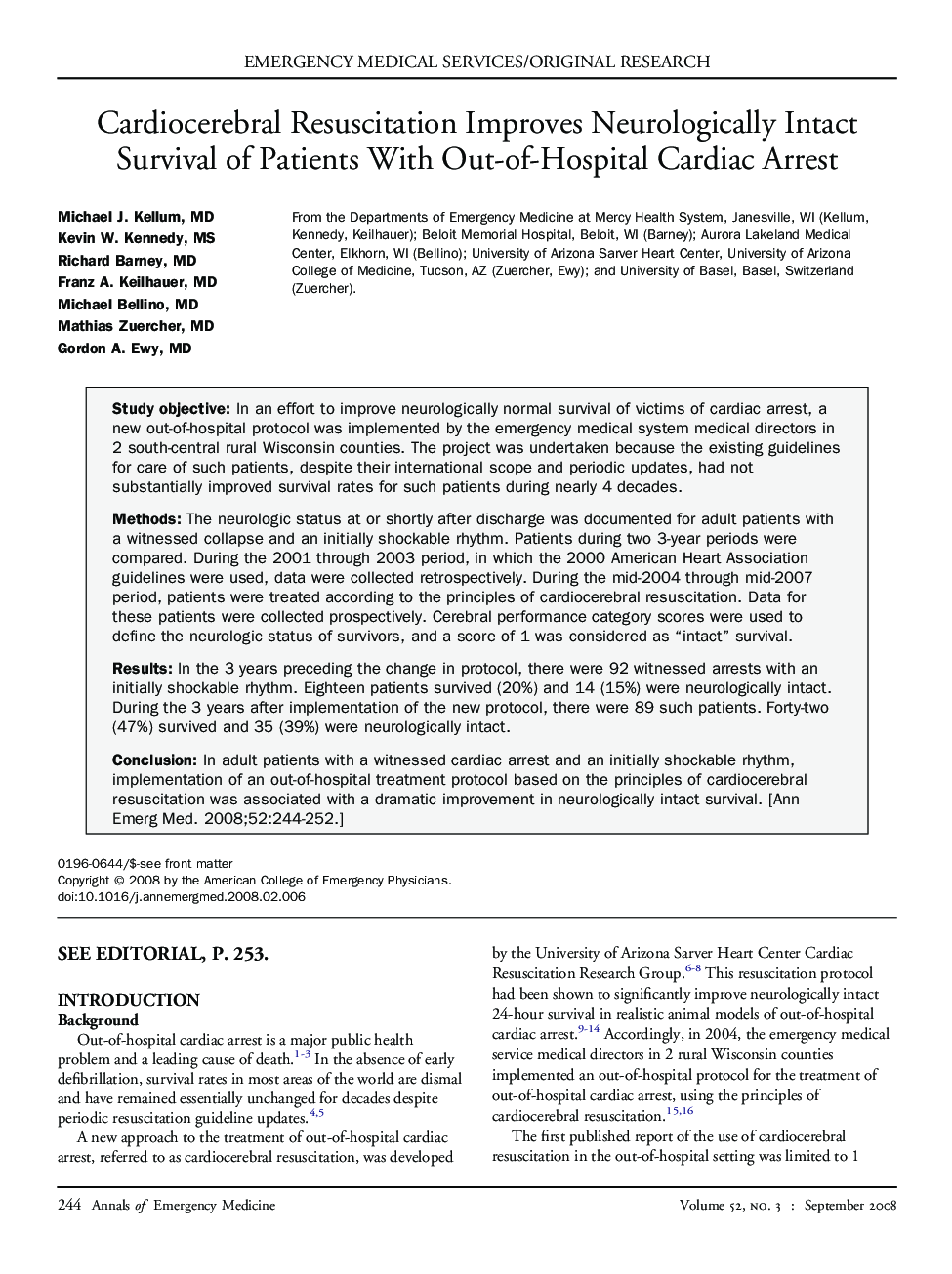| Article ID | Journal | Published Year | Pages | File Type |
|---|---|---|---|---|
| 3232690 | Annals of Emergency Medicine | 2008 | 9 Pages |
Study objectiveIn an effort to improve neurologically normal survival of victims of cardiac arrest, a new out-of-hospital protocol was implemented by the emergency medical system medical directors in 2 south-central rural Wisconsin counties. The project was undertaken because the existing guidelines for care of such patients, despite their international scope and periodic updates, had not substantially improved survival rates for such patients during nearly 4 decades.MethodsThe neurologic status at or shortly after discharge was documented for adult patients with a witnessed collapse and an initially shockable rhythm. Patients during two 3-year periods were compared. During the 2001 through 2003 period, in which the 2000 American Heart Association guidelines were used, data were collected retrospectively. During the mid-2004 through mid-2007 period, patients were treated according to the principles of cardiocerebral resuscitation. Data for these patients were collected prospectively. Cerebral performance category scores were used to define the neurologic status of survivors, and a score of 1 was considered as “intact” survival.ResultsIn the 3 years preceding the change in protocol, there were 92 witnessed arrests with an initially shockable rhythm. Eighteen patients survived (20%) and 14 (15%) were neurologically intact. During the 3 years after implementation of the new protocol, there were 89 such patients. Forty-two (47%) survived and 35 (39%) were neurologically intact.ConclusionIn adult patients with a witnessed cardiac arrest and an initially shockable rhythm, implementation of an out-of-hospital treatment protocol based on the principles of cardiocerebral resuscitation was associated with a dramatic improvement in neurologically intact survival.
